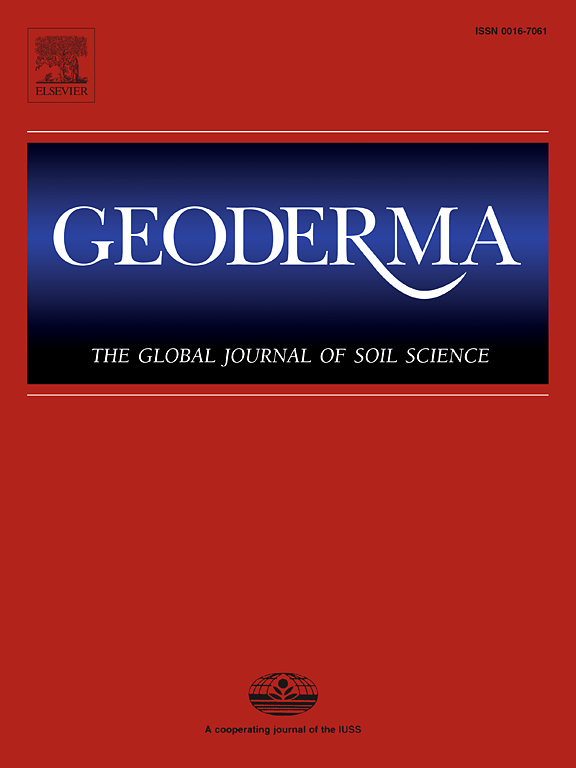Determination of aggregate stability in kaolinitic subsoils using an energy-based, laser diffraction method
IF 6.6
1区 农林科学
Q1 SOIL SCIENCE
引用次数: 0
Abstract
Traditional aggregate stability methodologies, such as wet sieving, rainfall simulation, and chemical dispersion, measure aggregate size, rather than stability. Sonication methods allow for energy-based measurements of aggregate stability, but most methods involve sieving to obtain gravimetric measurements of particle size fractions, which increases labor and variability compared to volumetric measurements by laser diffraction analyses. One criticism of energy-based methods is that ultrasonic devices are calibrated in a closed vessel containing water whereas the application of energy in routine analyses is commonly done in an open system containing soil and water, without considering the effects of soil mass and specific heat on sonication power or the energy lost from the system by conduction and/or other forces in an open system. Using texturally diverse subsoil samples with low carbon and similar clay mineralogy, we quantified 1) the effects of system type (thermodynamically closed versus open systems) and 2) the effect of assuming energy from calibrations in water versus measuring thermal energy in a soil–water system on soil dispersion curves. We found that these factors do not significantly affect soil dispersion curves of coarse- and medium-textured soils; however, fine samples are affected by system type and the method used to quantify energy. Overall, indices produced from soil dispersion curves are highly reproducible in both open and closed systems and correlate with soil physical properties that impact aggregate stability. These indices may streamline future measurements of aggregate stability and facilitate the inclusion of this important soil property in soil assessments.
利用基于能量的激光衍射法测定高岭土基土中骨料的稳定性
传统的集料稳定性方法,如湿筛、降雨模拟和化学分散,测量的是集料尺寸,而不是稳定性。超声波方法可对骨料稳定性进行基于能量的测量,但大多数方法都需要通过筛分来获得粒径分数的重力测量值,这与激光衍射分析的体积测量值相比,增加了工作量和可变性。对基于能量的方法提出的一个批评是,超声波设备是在装有水的封闭容器中进行校准的,而常规分析中的能量应用通常是在装有土壤和水的开放系统中进行的,没有考虑土壤质量和比热对超声功率的影响,也没有考虑开放系统中通过传导和/或其他力从系统中损失的能量。我们利用质地不同、碳含量低且粘土矿物结构相似的底土样本,量化了 1) 系统类型(热力学封闭系统与开放系统)的影响,以及 2) 假设在水中校准能量与在土壤-水系统中测量热能对土壤弥散曲线的影响。我们发现,这些因素对粗质土和中质土的土壤弥散曲线影响不大;但细粒样品则会受到系统类型和能量量化方法的影响。总体而言,根据土壤弥散曲线得出的指数在开放和封闭系统中都具有很高的重现性,并且与影响集料稳定性的土壤物理特性相关。这些指数可简化未来对团聚稳定性的测量,并有助于将这一重要的土壤特性纳入土壤评估。
本文章由计算机程序翻译,如有差异,请以英文原文为准。
求助全文
约1分钟内获得全文
求助全文
来源期刊

Geoderma
农林科学-土壤科学
CiteScore
11.80
自引率
6.60%
发文量
597
审稿时长
58 days
期刊介绍:
Geoderma - the global journal of soil science - welcomes authors, readers and soil research from all parts of the world, encourages worldwide soil studies, and embraces all aspects of soil science and its associated pedagogy. The journal particularly welcomes interdisciplinary work focusing on dynamic soil processes and functions across space and time.
 求助内容:
求助内容: 应助结果提醒方式:
应助结果提醒方式:


